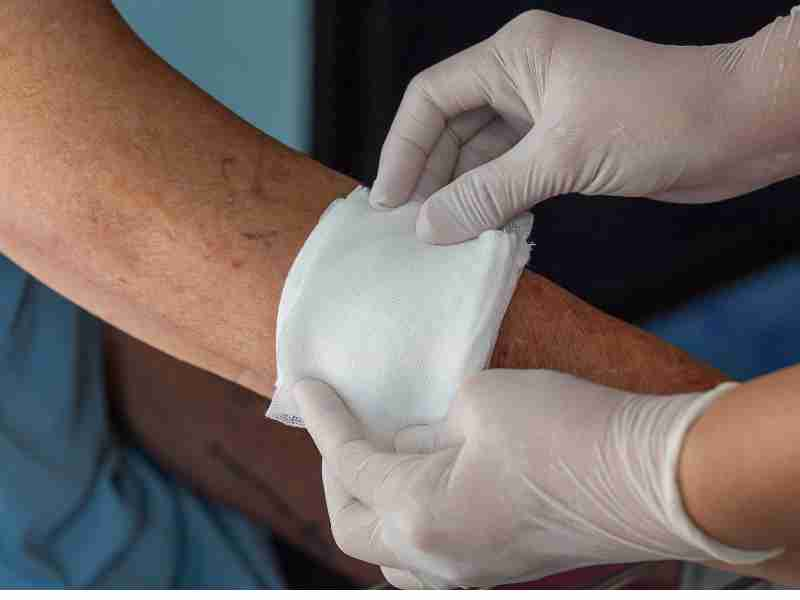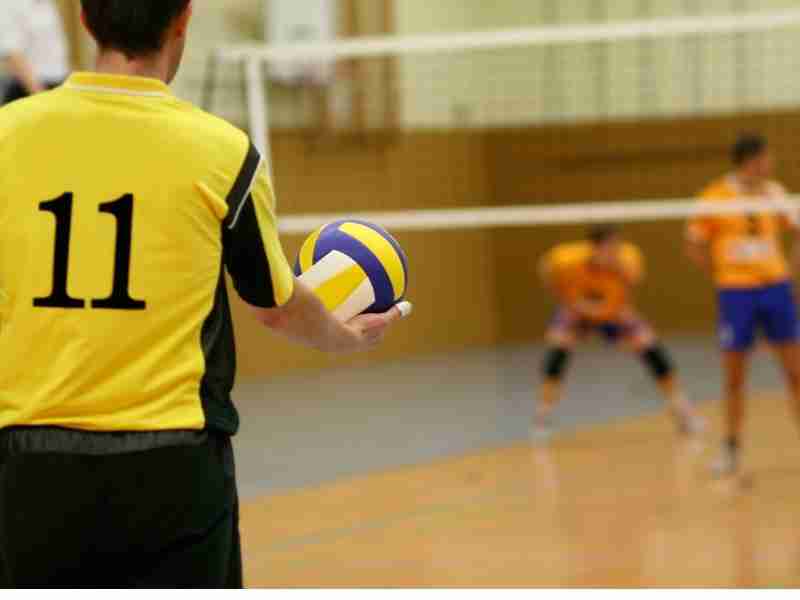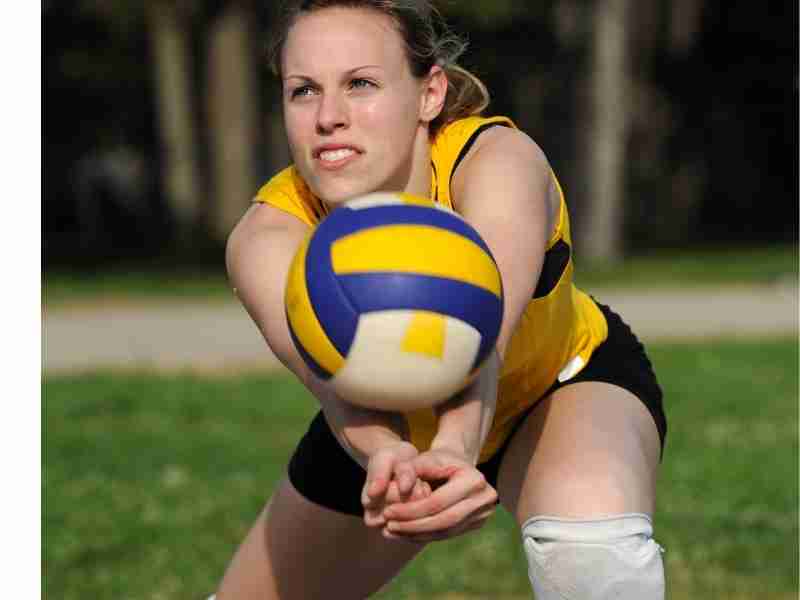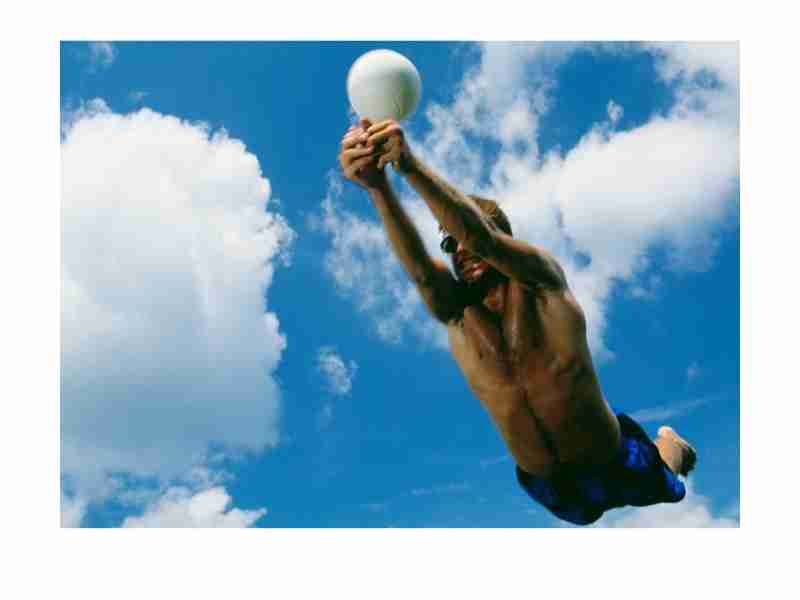
Diving is an essential skill for any volleyball player who wants to compete at a high level. Not only does it allow you to make incredible plays on the court, but it also helps to protect you from injury. Learning how to dive correctly is essential for any player who wants to take their game to the next level.
Our Volleyball Camps will help you master the proper technique for diving. Our experienced coaches will work one-on-one to help you perfect your form. You’ll also get plenty of opportunities to practice diving in game-like situations. By the end of camp, you’ll be a strong defender and a better all-around volleyball player.
What’s a dive in volleyball?

A dive is when a player deliberately contacts the floor with parts of their body other than their feet or hands to keep the ball off the ground. It is one type of defensive technique players use to stay in play and make a dig. Players often extend one arm out in front of them when attempting a dive and arch their back to create as many surface areas as possible.
This increases the probability that some part of their body will contact the ball. Dives are often used as a last-ditch effort to keep the ball off the ground and are sometimes called “desperation dives.” While they may not always be successful, they are an essential part of the game and can sometimes help turn the tide of a match.
Why do you dive in volleyball?
When we see a player dive or roll, many of us think they’re just trying to make a dig – but that’s not always the case. In reality, diving is often more about protecting our bodies and safely landing on the ground after keeping the ball off the floor.
When a player dives, they’re usually trying to deflect the ball into the air so that it will stay off the floor. This keeps the point alive and prevents the opposing team from taking control of the ball. Diving may not always result in a dig, but keeping the game going is essential.
What is diving skill in volleyball?
Diving is a skill used in volleyball to keep the ball from touching the court when it comes down from a high point. A player will dive forward, throwing their body into the air and landing on some part of their body other than their feet.
This can be used to save a ball about to go out of bounds or keep the ball from hitting the ground in front of the player. Diving is challenging to master, but it can be a very effective way to keep the ball in play. Players skilled at diving will often be able to prevent the other team from scoring a point, which can be vital in a close match.
Divers must be careful not to land on their stomach or back, as this can cause serious injury. Players should also avoid landing on their heads, which can damage them. When done correctly, diving can be a very effective way to prevent the other team from scoring.
Types of Dives in Volleyball
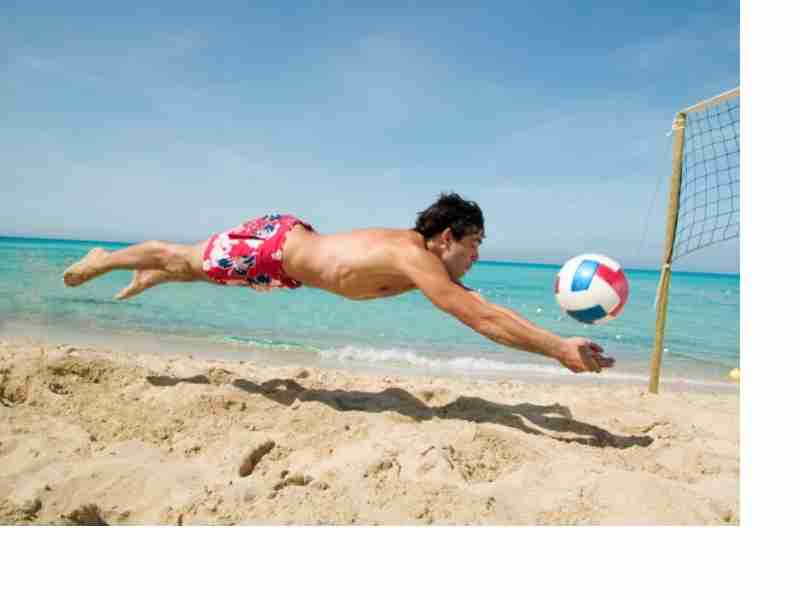
swan dive
Swan dive is a technique used in volleyball to keep the ball alive in difficult situations. In defense, when the ball travels low to the ground, it isn’t possible to rely on the 5 Skills of Volleyball to play it up or over.The player dives forward and down, using their arms to cup the ball and prevent it from hitting the ground.
This allows the team to stay in the game and gives them a chance to make a recovery. Swan dive can be a difficult move to execute, but with practice, it can be a valuable tool for any volleyball player.
side/role dive
The side dive is the more commonly used of the two, and it involves collapsing to one side and extending the arm along the floor to pass the ball. This can be done with a rolling follow-up, where the player rolls around their arm and returns to their feet in one smooth motion.
The roll dive is more advanced and looks more impressive, but it is not always necessary. It is performed by rolling onto the floor and passing the ball while lying on your back.
Pancake Dive
A pancake is when a player flattens their hand against the ground before the ball makes contact in that same spot. When done correctly, the player not only looks like they are making a pancake, but the ball will simultaneously make contact with the ground, giving them a significant advantage.
While it may seem simple, many players find it challenging to do it consistently. However, those who can master the pancake will discover that it can be a powerful weapon in their arsenal.
Steps of How to Dive Properly in Volleyball?
Step Towards the Ball
When playing volleyball, you should always step toward the ball. This may seem obvious, but you would be surprised how many people step backward when they are about to receive a serve. Stepping backward puts you off balance and makes it very difficult to return the ball.
Instead, take a small step forward with your dominant foot just before the ball is served. This will help you stay balanced and gives you a better chance of returning the ball.
Get Low
Getting low when you dive in volleyball is to maximize your reach and avoid injury. You want to aim to dive below waist height, as diving from higher up is a more advanced skill and requires training. When you’re getting low, you want to ensure that your hips are lower than your shoulders and that your back is straight.
This will help you generate the most power possible and give you the best chance of making the save. Remember, getting low is about giving yourself the best opportunity to succeed while minimizing the risk of injury.
Extend Towards the Ball
Always extend your arms and body towards the ball when making a diving save in volleyball. It would help if you fell outward and down, with your extension mostly sideways and parallel to the ground.
This will lead directly to the next step. Remember: you MUST COMMIT to the dive for it to be safe and feel good. If you hesitate or try to stop yourself, you could get hurt. So go for it and enjoy the thrill of making an excellent save!
Push Off The Ground
Push off the ground with the ball in a volleyball dive, so you become close to the ground and propel yourself parallel to it. This step aims to avoid falling at the impractical angle that is simply collapsing puts you at. This will let you slide on your chest or side rather than your hips.
Pushing off the ground gives you more control over your body and keeps you from hitting the ground at an awkward angle. It also makes it easier to get back up after the dive. So, next time you’re going for a dig, push off the ground first!
Catch Yourself
When you’re playing volleyball, there are a few times you’ll need to dive. And when you do, you want to ensure you do it properly to avoid injury. The key is to catch yourself with your hands and guide yourself to the ground. The purpose here is not to support your body weight but to control how it contacts the ground.
You want to be moving forward and “swan” through it, pushing your hands to the side and back of your body as you land, like an otter. This will help ensure a safe and successful dive every time.
Slide
When it’s time to take the dive and slide into position for that killer spike or save, there are a few things to keep in mind. First, tuck your chin to avoid hurting your neck when you hit the ground.
Second, push your chest out – this will help keep your limbs from catching and getting scraped up. Third, and most importantly, have fun! Sliding around on the court is one of the best parts of volleyball, so enjoy every minute of it. Just remember to stay safe and keep your chin up!
Recover
No matter how good of a diver you are, there will be times when you end up on the floor. The key is to get back up as quickly as possible so you can resume your position and be ready for the next play. When you hit the floor, roll onto your side and push up with your arms so that you end up in a crawling position.
From there, put one hand down and then the other, followed by your knees. Finally, stand up and get back into your ready stance. Following this procedure will minimize your time on the ground and maximize your team’s chances of winning the point.
FAQs
Q: What is the best way to extend towards the ball when making a diving save?
A: Extend your arms first and then your body towards the ball. It would help if you fell outward and down, with your extension mostly sideways and parallel to the ground.
Q: How do I push off the ground when making a diving save?
A: Push off the ground with the ball in a volleyball dive, so you become close to the ground and propel yourself parallel to it. This step aims to avoid falling at the impractical angle that is simply collapsing puts you at. This will let you slide on your chest or side rather than your hips.
Pushing off the ground gives you more control over your body and keeps you from hitting the ground at an awkward angle. It also makes it easier to get back up after the dive. So, next time you’re going for a dig, push off the ground first!
Q: What should I do when I hit the ground during a dive?
A: When you’re playing volleyball, there are a few times you’ll need to dive. And when you do, you want to ensure you do it properly to avoid injury. The key is to catch yourself with your hands and guide yourself to the ground.
The purpose here is not to support your body weight but to control how it contacts the ground. You want to be moving forward and “swan” through it, pushing your hands to the side and back of your body as you land, like an otter. This will help ensure a safe and successful dive every time.
Q: Can I practice my diving skills?
A: Yes! To practice your diving skills, try doing some drills where you simulate making a save or spike. Be sure to focus on extending towards the ball and pushing off the ground correctly so you can execute a successful dive every time!
Conclusion
Diving in volleyball can be a thrilling experience, but it’s essential to do it safely and correctly to avoid injury. In this article, we’ve outlined the steps you need to take when diving to make the save or spike with confidence. Remember to practice these skills regularly and enjoy the thrill of driving a fantastic play!




